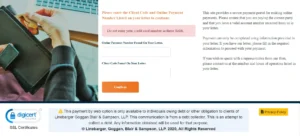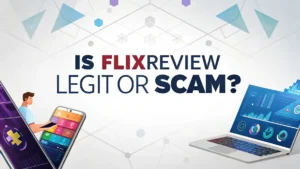The cryptocurrency world promises financial freedom and opportunities. Yet this digital landscape also contains risks. Blockchain.com stands as one of the oldest players in the crypto space. But questions about its trustworthiness have grown louder.
Users report frozen accounts, missing funds, and poor customer service. These stories paint a concerning picture for potential users.
This guide explores the truth about Blockchain.com. We dive into user experiences, common complaints, and warning signs. You will learn the different types of issues users face. Most importantly, we provide practical advice to protect your crypto assets.
Key Takeaways: What You Need to Know About Blockchain.com
Before diving deeper, here are the essential points you should understand about Blockchain.com:
- Blockchain.com has been operating since 2011 and was one of the first Bitcoin blockchain explorers
- Many users report funds being frozen without explanation for weeks or months
- Customer support is frequently described as unresponsive or unhelpful by users seeking assistance
- Multiple Reddit threads document cases where users couldn’t access their own money
- The platform has faced accusations of extracting fees for fund recovery services that don’t materialize
- Withdrawals are a common pain point, with users reporting transactions stuck in pending status for months
- Users who have their accounts suspended often find it nearly impossible to regain access
- The Better Business Bureau has received numerous complaints about the platform
- Even small transactions can encounter problems, making it risky for both small and large investors
- Many users recommend alternative platforms like Coinbase, Kraken, or hardware wallets for safer crypto storage
- The platform’s official support pages warn about scammers impersonating Blockchain.com representatives
- Account security on Blockchain.com requires extra vigilance compared to other platforms
What is Blockchain.com?
Blockchain.com began in 2011 as the first Bitcoin blockchain explorer. The company later expanded to offer cryptocurrency wallets. Between 2012 and 2020, it handled about 28% of all Bitcoin transactions. Peter Smith joined as CEO in 2014, with the founding team working from a flat in York, England. Early funding came from Bitcoin investor Roger Ver.
The platform offers services for buying, selling, and storing cryptocurrencies. It provides both wallet services and exchange functions. Users can create accounts to manage various digital assets. The company claims to serve millions of customers worldwide.
Despite its long history, Blockchain.com faces growing criticism. Users question its reliability and customer service quality. The contrast between its established position and user complaints creates confusion for potential customers. This contradiction makes understanding the real story behind Blockchain.com more important than ever.
Common Scam Patterns on Blockchain.com
Users report several recurring problems with Blockchain.com. These patterns appear too often to dismiss as isolated incidents. Account freezes happen suddenly and without clear explanation. Users find themselves locked out of their accounts containing thousands of dollars worth of cryptocurrency.
Customer service issues rank among top complaints. Support tickets remain unanswered for weeks or months. When responses come, they often contain generic templates rather than helpful solutions. This leaves users feeling abandoned during critical financial situations.
Withdrawal problems plague many users. Transactions show as complete in the system but never arrive at their destination. Fund recovery claims add another layer of concern. Some users report being charged fees to recover their own funds, only to never receive them.
The verification process creates additional frustrations. Users submit required documents but face endless delays in verification. Meanwhile, their funds remain inaccessible. This combination of issues suggests systematic problems rather than occasional errors.
User Experiences with Blockchain.com
Real stories from users paint a vivid picture of problems. One user on Reddit described spending a month trying to recover funds from a failed transaction. Despite the money leaving their bank account, Blockchain.com claimed the transaction never happened. After countless emails, the company blocked the user’s account entirely.
Another user reported sending Bitcoin from Blockchain.com to Coinbase. The transaction shows as complete on the blockchain but remains pending in Coinbase after a year. This leaves the user unable to access their cryptocurrency.
The pattern extends to larger amounts too. A different user claimed Blockchain.com and its representatives took $34,000 for fund recovery services but never returned the funds. After this, the company representatives stopped responding to calls and messages.
Even basic functionality causes problems. Users describe being unable to log in with unchanged passwords they’ve used for years. Others report transactions failing without explanation. The frequency of these stories suggests legitimate concerns about platform reliability.
Red Flags and Warning Signs
Several warning signs should alert potential users to possible problems. Poor communication stands out prominently. When a financial platform fails to respond to urgent inquiries, it raises serious questions about their operations.
Inconsistent policies create additional concerns. Users report different answers to the same questions from support staff. This suggests internal disorganization or deliberate obfuscation. Either way, it undermines trust.
Account restrictions without clear explanations signal potential problems. Financial platforms should provide specific reasons when limiting account access. Vague explanations about policy violations without details indicate possible unfair practices.
Hidden fees also appear in user complaints. Some report unexpected charges that weren’t clearly disclosed beforehand. These surprise costs damage trust and transparency. The combination of these red flags creates a troubling pattern that potential users should carefully consider.
How to Protect Your Crypto Assets
Taking control of your cryptocurrency security requires specific actions. First, use hardware wallets like Ledger, Trezor, or Coldcard for long-term storage. These physical devices keep your private keys offline and safe from online threats.
Enable two-factor authentication on any platform you use. This adds an extra security layer beyond passwords. Keep records of all transactions, including screenshots and confirmation emails. These help resolve disputes if problems arise.
Never share private keys or recovery phrases with anyone, including support staff. Legitimate companies never ask for these. Research platforms thoroughly before depositing funds. Check reviews on multiple sites, not just official testimonials.
Start with small amounts when trying new platforms. This limits potential losses while testing reliability. Withdraw regularly to your personal wallets rather than keeping large amounts on exchanges. This reduces risk if the platform has problems later.
Alternative Platforms to Consider
Several alternatives offer more reliable services than Blockchain.com. Coinbase provides a user-friendly interface with responsive customer support. While fees can be higher, the security and reliability justify the cost for many users.
Kraken offers excellent security features and transparent operations. Their customer service receives consistently positive reviews. Binance provides access to numerous cryptocurrencies with competitive fees, though US users face restrictions.
For those prioritizing self-custody, hardware wallets combined with software interfaces offer the best security. Electrum works well for Bitcoin, while Metamask serves Ethereum users effectively. These alternatives provide better user experiences and greater peace of mind than problematic platforms.
Legal Recourse for Scam Victims
Victims of cryptocurrency scams have several options. File complaints with relevant authorities including the Federal Trade Commission (FTC) and Consumer Financial Protection Bureau (CFPB). These agencies track patterns of problematic behavior across financial services.
Document everything related to your case. Save emails, screenshots, transaction IDs, and support ticket numbers. This evidence strengthens your case when seeking help from authorities. Contact your bank about reversing charges if you recently made deposits that led to problems.
Consider legal consultation if significant amounts are involved. Some attorneys specialize in cryptocurrency cases. While legal action costs money, it may be worthwhile for larger losses. Join community forums where other victims share experiences and strategies. Collective action sometimes yields better results than individual complaints.
The Psychological Impact of Crypto Scams
Getting scammed affects more than just finances. Trust issues develop that extend beyond cryptocurrency. Victims often feel reluctant to try new financial services. Self-blame commonly occurs despite the sophisticated nature of many scams. Victims question their judgment and decision-making abilities.
Financial anxiety increases as victims worry about recovering from losses. This stress affects many aspects of life. Shame prevents some victims from discussing their experiences, limiting their access to support and information that could help.
Recovery takes time both emotionally and financially. Understanding these psychological impacts helps victims recognize they’re not alone. Support groups specifically for cryptocurrency scam victims exist online. These communities provide valuable emotional support during recovery.
The Future of Crypto Security
Cryptocurrency security continues evolving to address current vulnerabilities. Regulatory frameworks are developing worldwide to protect consumers. These will likely impose stricter requirements on cryptocurrency platforms. Improved verification systems using biometrics and AI help prevent unauthorized access.
Decentralized exchanges reduce reliance on centralized platforms that can freeze funds. These systems allow direct trading between users without middlemen. Smart contract insurance provides compensation if code vulnerabilities lead to losses. This creates additional protection for users.
Educational initiatives help users understand security best practices. As knowledge spreads, fewer people fall victim to common scams. Industry standards for platform security and transparency continue developing. These improvements promise a safer future for cryptocurrency users.
Avoiding Future Scams in the Crypto World
Protecting yourself requires ongoing vigilance. Research thoroughly before using any platform. Check multiple review sources beyond the company’s website. Start small when trying new services. Test with minimal amounts before committing significant funds.
Update security practices regularly as new threats emerge. This includes using unique passwords and keeping software updated. Question unrealistic promises about returns or guarantees. Cryptocurrency investments carry risks that legitimate companies acknowledge honestly.
Join reputable communities for information sharing about platform experiences. These groups often identify problems before they become widespread. Use multiple security layers including hardware wallets, strong passwords, and two-factor authentication. This comprehensive approach provides the best protection against evolving threats.
FAQs About Blockchain.com Scams
Is Blockchain.com a legitimate company?
Yes, Blockchain.com is a registered company that has operated since 2011. However, many users report serious problems with their services.
How can I recover funds from Blockchain.com?
Contact their support team through official channels and file complaints with financial authorities like the CFPB. Document all communications.
Does Blockchain.com offer fund recovery services?
No. According to their official documentation, Blockchain.com does not provide fund recovery services. Anyone claiming otherwise is likely running a scam.
Why does Blockchain.com freeze accounts?
They claim to freeze accounts for security concerns and compliance reasons, but many users report freezes without clear explanations.
Are all cryptocurrency platforms risky?
No. While all platforms carry some risk, many provide reliable services with proper security measures and responsive customer support.
How can I identify a crypto scam?
Watch for promises of guaranteed returns, pressure to act quickly, requests for private keys, and poor or non-existent customer support.
Should I keep my crypto on an exchange?
For active trading, small amounts on reputable exchanges are acceptable. For long-term storage, hardware wallets provide better security.
Can I get help from law enforcement for crypto scams?
Yes, report scams to local police, the FBI’s Internet Crime Complaint Center, and financial regulatory authorities.



























